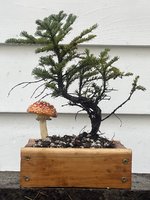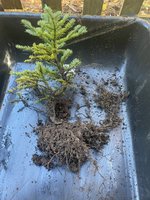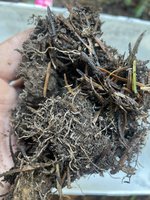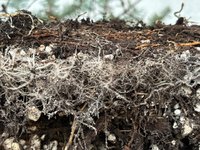WIlliam_Butler_Yeets
Mame
Hi folks, first off don't worry I'm not planning to bareroot any pines in the middle of July.
I have a couple of JBP that I bought this past April-ish, and slip potted into terracotta flower pots to wait until I have a actual seasonally appropriate repotting opportunity. I'd like to get them into pond baskets this coming winter to let them mostly grow wild next year and bulk up a bit and start developing some good sacrifice branches.
Most of what I've read about JBP repotting warns against barerooting pines, because they require mycorhizzal fungi in their soil (although I have not had a lot of luck in determining actual species that naturally form mycorhizzal relationships with black pines), and removing the fungi can negatively impact the health of the tree.
What I was curious about, and I was unsure what terms to search to see if there might be any information about this on the forum already, has anyone tried/had success with introducing a myrcorhizzal fungi supplement, or maybe inoculating with already fungally colonized soil, or something, and let that spread throughout a new media before potting a pine into it? My suspicion is that being planted into a fungally prepared media would make the repotting stress less severe, but I have not tested it (maybe if no one knows I will do this as an experiment when we get closer to autumn).
I have a couple of JBP that I bought this past April-ish, and slip potted into terracotta flower pots to wait until I have a actual seasonally appropriate repotting opportunity. I'd like to get them into pond baskets this coming winter to let them mostly grow wild next year and bulk up a bit and start developing some good sacrifice branches.
Most of what I've read about JBP repotting warns against barerooting pines, because they require mycorhizzal fungi in their soil (although I have not had a lot of luck in determining actual species that naturally form mycorhizzal relationships with black pines), and removing the fungi can negatively impact the health of the tree.
What I was curious about, and I was unsure what terms to search to see if there might be any information about this on the forum already, has anyone tried/had success with introducing a myrcorhizzal fungi supplement, or maybe inoculating with already fungally colonized soil, or something, and let that spread throughout a new media before potting a pine into it? My suspicion is that being planted into a fungally prepared media would make the repotting stress less severe, but I have not tested it (maybe if no one knows I will do this as an experiment when we get closer to autumn).






